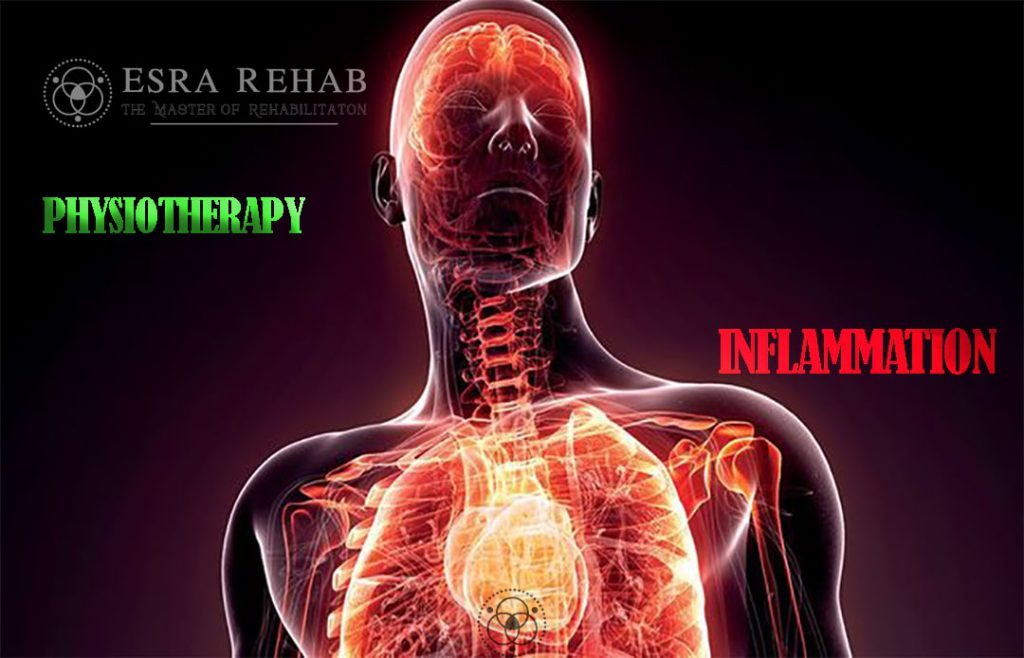Inflammation and Physiotherapy Acute/Chronic Phase: Understanding the Crucial Connection 2023
Introduction
Picture this: your body springs into action after an injury, redness sets in, there’s swelling, warmth, and it hurts. What’s happening here? Inflammation. This natural defense mechanism is your body’s way of healing. When it comes to inflammation and the acute phase of physiotherapy, understanding this relationship is vital for effective treatment.
Table of Contents
| Sr# | Headings |
|---|---|
| 1. | The Inflammatory Response: Unveiling the Basics |
| 2. | Physiotherapy’s Role in Inflammation Management |
| 3. | Understanding the Acute Phase and its Significance |
| 4. | Effective Techniques in Acute Phase Treatment |
| 5. | Role of Exercise: Navigating the Healing Path |
| 6. | Nutrition’s Impact on Inflammation Recovery |
| 7. | Lifestyle Modifications for Acute Phase Care |
| 8. | Monitoring Progress: Tracking Inflammation |
| 9. | Managing Chronic Inflammation with Physiotherapy |
| 10. | The Synergy of Physiotherapy and Pain Management |
1. The Inflammatory Response: Unveiling the Basics
Inflammation isn’t the villain; it’s your body’s shield against harm. When injury or infection occurs, your immune system rallies white blood cells to the affected area. This response triggers swelling and discomfort but paves the way for healing.
2. Physiotherapy’s Role in Inflammation Management
Physiotherapy isn’t just about exercises. It’s a tailored approach to harness your body’s healing abilities. Techniques like manual therapy and modalities assist in reducing inflammation and promoting recovery.
This might involve:
- Manual Therapy: Hands-on techniques to improve joint mobility and reduce pain associated with chronic inflammation.
- Exercise Prescription: Customized exercises to strengthen muscles, improve flexibility, and enhance overall function.
- Modalities: Incorporate modalities like ultrasound, electrical stimulation, or heat/cold therapy to manage inflammation.
3. Understanding the Acute Phase and its Significance
The acute phase is the initial stage of injury when inflammation peaks. It’s a critical window where proper care can significantly impact the healing process. Addressing inflammation effectively during this phase sets the tone for recovery.
4. Effective Techniques in Acute Phase Treatment
Utilizing ice, compression, elevation, and specific exercises tailored to the injury plays a pivotal role in managing acute phase inflammation. These techniques aid in reducing swelling and pain. Also, photon and light-based therapies, including laser therapy, offer promising avenues for managing both acute and chronic inflammation. Here’s how these therapies can be utilized:
1. Low-Level Laser Therapy (LLLT):
- Reducing Inflammation: LLLT emits low-intensity light to target inflamed areas. It aids in reducing acute inflammation by modulating inflammatory markers and promoting tissue repair.
2. Photobiomodulation:
- Anti-inflammatory Effects: Specific wavelengths of light can penetrate tissues, stimulating cellular processes that mitigate acute inflammation and promote healing.
3. LED Therapy:
- Reducing Swelling: Light-emitting diode (LED) therapy assists in reducing swelling by enhancing lymphatic drainage and improving circulation in the affected area.
5. Role of Exercise: Navigating the Healing Path
Guided exercises not only enhance mobility but also stimulate circulation, facilitating the body’s natural inflammatory response. It’s about strategic movement to aid healing without aggravating the injury.
6. Nutrition’s Impact on Inflammation Recovery
Fueling your body with anti-inflammatory foods can support the healing process. Incorporating omega-3 fatty acids, antioxidants, and vibrant fruits and vegetables aids in reducing inflammation.
7. Lifestyle Modifications for Acute Phase Care
Optimal rest, stress management, and adequate sleep are paramount during the acute phase. These lifestyle adjustments complement physiotherapy, fostering an optimal environment for healing.
8. Monitoring Progress: Tracking Inflammation
Regular assessments and tracking of inflammation markers provide crucial insights into the effectiveness of physiotherapy interventions. It allows for necessary adjustments to optimize the healing trajectory.
9. Managing Chronic Inflammation with Physiotherapy
Chronic inflammation demands a different approach. Physiotherapy techniques, coupled with lifestyle changes, play a key role in managing long-term inflammatory conditions. some modalities are:
1. Laser Therapy:
- Anti-inflammatory Properties: Laser therapy, especially when used with specific wavelengths, helps manage chronic inflammation by decreasing inflammatory mediators and enhancing tissue healing.
2. Photodynamic Therapy (PDT):
- Targeted Treatment: PDT involves combining a photosensitizing agent with light of a specific wavelength to target and destroy inflamed tissues or cells contributing to chronic inflammation.
3. Multi-Wavelength Therapy:
- Modulating Inflammation: Utilizing a combination of different wavelengths of light can have a synergistic effect in modulating chronic inflammation, promoting tissue regeneration and reducing pain.
10. The Synergy of Physiotherapy and Pain Management
Physiotherapy not only addresses inflammation but also alleviates associated pain. Its holistic approach tackles the root cause, aiding in pain reduction and overall well-being. As a general application, we can
Conclusion
Understanding inflammation and its relationship with the acute or chronic phase of physiotherapy unveils a critical aspect of the body’s healing mechanisms. Effective management during this phase lays the foundation for a smoother recovery journey.
FAQs
1. How long does the acute phase of inflammation typically last?
The acute phase varies based on the injury or condition but often spans a few days to a couple of weeks.
2. Can physiotherapy worsen inflammation during the acute phase?
When tailored appropriately, physiotherapy techniques aim to manage inflammation without exacerbating it.
3. Are there specific foods that can speed up inflammation recovery?
Yes, incorporating anti-inflammatory foods like turmeric, leafy greens, and berries can aid in faster recovery.
4. Is rest as crucial as physiotherapy during the acute phase?
Rest is essential to allow the body to heal, complementing the effects of physiotherapy interventions.
5. How do I know if my inflammation is becoming chronic?
Persistent symptoms beyond the expected acute phase duration could indicate the onset of chronic inflammation, requiring specialized care.



